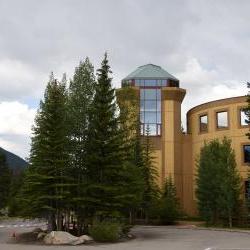
2019 Colorado Health Symposium Preview – Health. Home. Opportunity.
A stable, safe and affordable home is the foundation for good health. It’s instrumental to helping build communities where all can thrive—regardless of what they look like, where they’re from, how much money they earn or who they love. At this year’s Colorado Health Symposium, we’ll explore the complexity of our state’s housing crisis while calling attention to the systems that perpetuate inequity.
The lives of thousands of our neighbors in Colorado and millions more across the country have been disrupted by our nation’s housing crisis. We also know that the lack of affordable homes is not uniquely an urban phenomenon. Barriers to quality, affordable and attainable housing is indiscriminate of geographic boundaries throughout Colorado, impacting rural communities just as hard as suburbs and urban centers.
Bent, Crowley, Delta and San Miguel counties—among most counties across our state—have experienced a dramatic increase in folks who dedicate more than half of their income for rent. Challenges that exist along the Front Range are often intensified for our neighbors in rural Colorado, where construction costs have skyrocketed while wages remain low or unchanged. People who have lived in these communities for generations now find themselves needing to work multiple jobs and make other sacrifices just to keep a roof over their head. While resort communities and tourist hotspots have contributed to a thriving economy for the state, greater strain has been placed on local housing infrastructure and job options for people who call these regions ‘home.’
From the Eastern Plains to the Western Slope and everywhere in between, we recognize healthy homes remain out of reach for far too many Coloradans.
Unsurprisingly, another driver behind the lack of affordable homes today is rooted in our nation’s entrenched pattern of historic discrimination. After sweeping policy change criminalized racial covenants, which were widespread throughout much of the 20th century, de facto segregation is alive to this day.
Allow me to share from personal experience.
Several years ago in North Carolina, my husband and I began our search for a home. We each met with a realtor in a Winston-Salem suburb. My husband (a white man) was toured around predominantly white neighborhoods marked by “the best” schools and other community assets. Whereas I (a Black woman) was directed toward “modestly priced” neighborhoods in communities of diverse racial makeup and homes that looked remarkably different. Little did the realtor know that we would call attention to a racist game—one where they clearly were profiling prospective homebuyers on the basis of race. I often reflect on whether things would have been any different if this social experiment took place in Denver?
This experience served as a clear reminder that segregation is still deeply woven into the fabric of our housing system.
Historically speaking, the policy known as “redlining” systemically oppressed communities of color, most specifically impacting the lives of Black Americans. Communities that were comprised of majority Black populations were often coded in red (“hazardous”) and denied the opportunity for homeownership. Their white neighbors were coded in neighborhoods deemed green (“best”) or blue (“still desirable”). Opportunity for wealth building and upward mobility remained defined within these color lines, resulting in a deeply engrained racial history that has modern day implications for those with and without access to healthy homes, economic opportunity and much more.

This is but one example of a vicious cycle—and the inequity it exacerbates—that must be dismantled.
Symposium attendees will have the opportunity to learn more about the ramifications of redlining during the course of the conference. We will be bringing Enterprise’s Undesign the Redline to the Keystone Conference Center, an interactive exhibit tracing racial housing segregation of the 1930s up to the social issues of today.
So, why is housing vital to our health?
Unhealthy housing correlates with nearly all key drivers of health. For example, a national study from the Institute for Children, Poverty & Homelessness identified the disproportionate number of youth diagnosed with asthma compared to their peers who are stably housed. For young people living in historically redlined communities? They are twice as likely as their neighbors to be hospitalized for asthma symptoms.
Unstable, unsafe and unaffordable housing has also been linked to an increased rate of obesity, postponing necessary medical care, disruptive moves impacting behavioral and emotional challenges for youth, and increased risk of cardiovascular disease, mortality rate and lead poisoning among children.
A home that is unhealthy is literally making people sick. And because of this, we know that housing matters when it comes to our health. It matters because where we live impacts our educational attainment, economic and employment opportunities, access to viable transportation and nutritious food, and other community resources—all of which are fundamental to being healthy.
Through conference keynote, plenary and exchange sessions, you will hear from leaders across the state and beyond about historic and systemic inequities of the housing system. You will learn about current challenges and innovative solutions to address the housing crisis in your community. And you will learn the importance of building power through policies and community-level action to create healthy housing opportunities.
We hope you will find the Symposium a welcoming place: One where you can share knowledge, forge deeper connections with your peers, challenge one another and leave energized to create meaningful impact in the communities you live and work.
I look forward to sharing this time and space with you all.








